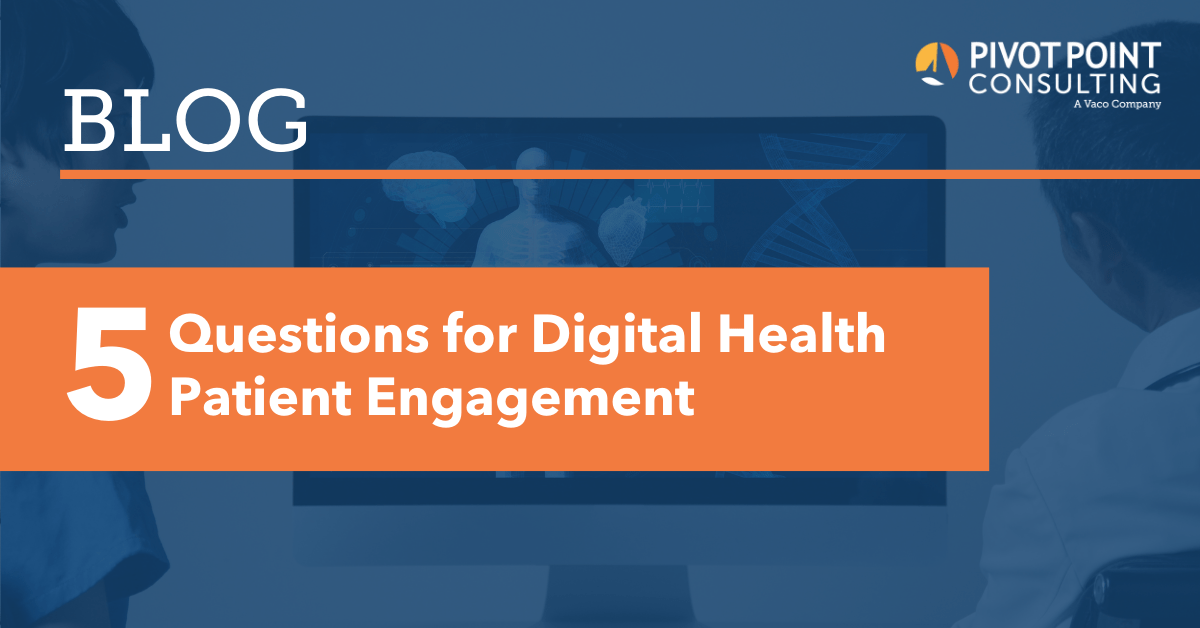If there is anything the COVID-19 pandemic has taught us, it is that consumers are ready and willing to adopt digital health tools. In a matter of days, they were video chatting with their primary care physician about their sore throat, texting pictures of their rash to their dermatologist and sending blood pressure readings via home medical devices to their cardiologist—all without even thinking twice about it. The question of digital health patient engagement was answered: patients were more than willing to remain engaged. Even during a pandemic, life goes on. People need healthcare services, and providers are able to deliver those services thanks to new and emerging digital health technology that increasingly pays dividends under value-based payment arrangements.
Now, nearly 18 months after the World Health Organization officially declared COVID-19 a pandemic, it is time to fully embrace digital health as part of a long-term strategy to improve outcomes and lower costs. Failing to do this means organizations will lose the consumer engagement momentum that COVID-19 created. Here are 5 questions to consider as organizations expand digital health strategies.
Have you fully embraced healthcare consumerism?
Healthcare organizations that can answer ‘yes’ to this question have seen how disruptors (e.g., Amazon Cares, national pharmacy chains, Walmart Health, and others) are making healthcare more convenient and affordable, and they’ve responded by hiring chief strategy officer or chief digital engagement officers whose job it is to create a similar retail experience in healthcare. This includes fast and easy access to care, cost transparency and personalized, data-driven interactions.
Does your digital health platform fully integrate with your electronic health record (EHR)?
Whether you’re building the platform internally or partnering with third-party entities to do it, integration with your EHR is paramount. True integration enables all kinds of innovative technologies and services—remote patient monitoring, automated text-based appointment reminders, patient self-scheduling capabilities, asynchronous virtual visits and more. If your organization doesn’t take a fully integrated approach, it will experience these drawbacks. Disparate systems lead to increased work for staff, dual documentation, increased risk of errors due to manual intervention and the potential for missing data that should have come in via integration. Organizations without full integration are also unable to utilize the full features available via the platform, specifically automation.What about your telehealth vendor specifically? Does it provide what you need to engage patients long-term, ensure compliance and improve outcomes? For example, in addition to integrating with your EHR, does it support compliance with HIPAA rules, such as willingness to sign a Business Associate Agreement? Does it have a liability structure for managing potential security breaches? What about the ability to integrate biometrics and remote patient monitoring, including data from consumer wearables? Does it have secure text-chat with the ability to attached pictures/images?
Have you fully addressed connectivity challenges?
Think: Rural areas, areas where homelessness is prevalent, or areas where individuals might not be able to afford Internet access. Work with community leaders around ways to extend the reach of your digital health strategy. What are your patients’ limitations, and how will these limitations inform your strategy? For example, do people tend to frequent certain community gathering spaces (e.g., churches, YMCAs, or Lion’s clubs)? If so, can you designate rooms within those buildings for telehealth and other types of digital visits that require access to broadband?
Have you tackled health literacy?
Although some patients aren’t intimidated by video visits, wearables, or home monitoring devices, many are—and they need education and support. In some organizations, the population health department partners with the marketing department to create campaigns around digital health tools and how to use them. Another idea is to store educational material (e.g., guides, tutorials, and FAQs) on the patient portal. Larger organizations have created a patient-facing help desk where staff answer questions about virtual care, how to use devices, how to log onto the portal, and more. Smaller organizations and federally qualified health centers may not have the resources to do this. Instead, these organizations can work with community health outreach staff to provide patients with printed materials. Regardless of your strategy, addressing social determinants of health is a critical part of achieving success with digital health solutions.
Have you identified hybrid care pathways?
Hybrid care models combine virtual (e.g., remote patient monitoring) and in-person care (e.g., procedures, labs, imaging, or immunizations) across the entire care continuum. Healthcare organizations are starting to think about managing specific diseases (e.g., hypertension, diabetes, and congestive heart failure) using these care pathways more strategically. However, important questions remain: how will organizations incorporate digital health tools into existing workflows? How will they optimize staff? How can they build interoperable and secure tools that are easy for patients and physicians to use? Finally, how can they continue to pursue value-based payment models that incentivize high-quality care at a lower overall cost? The answers to these questions will be organization-specific, and everyone needs to be on the same page in terms of prioritizing digital health investments.
Digital health patient engagement is possible
Healthcare is an industry ripe for disruption through digital health. COVID-19 gave organizations an opportunity to engage patients in new and innovative ways, and that increased the overall level of digital health patient engagement. Now it’s time to leverage that engagement for continued success with the ultimate goal of moving the needle on value-based care.


